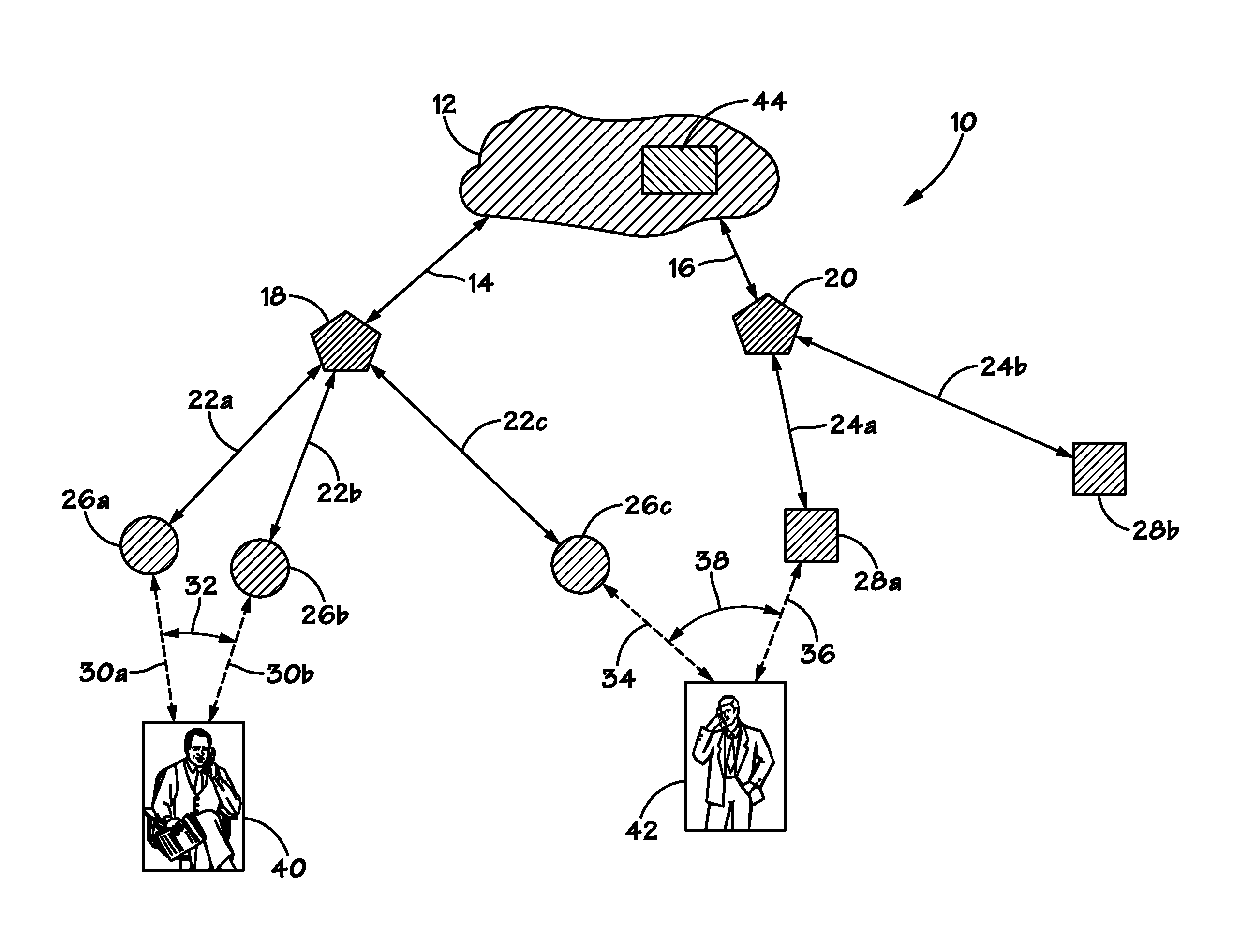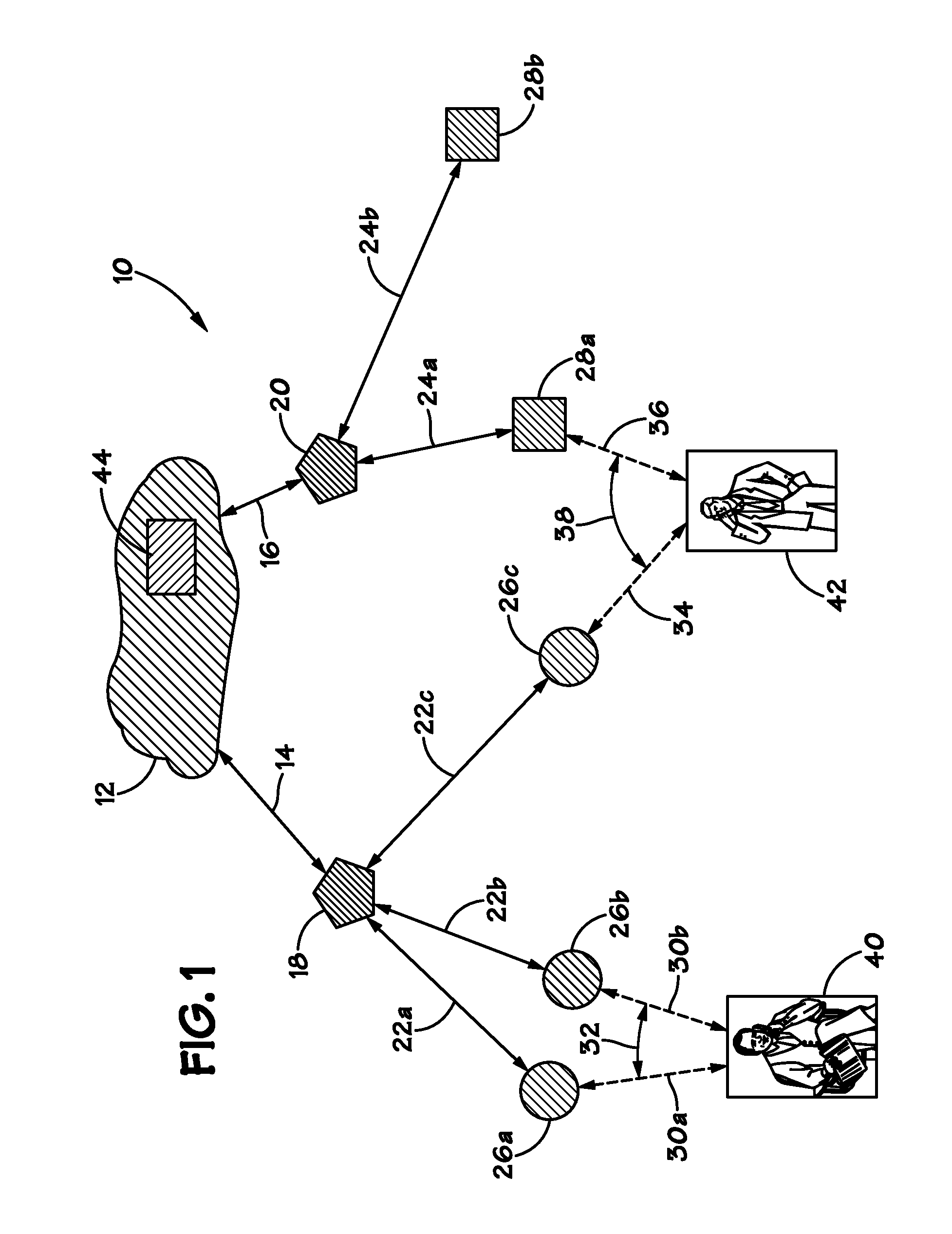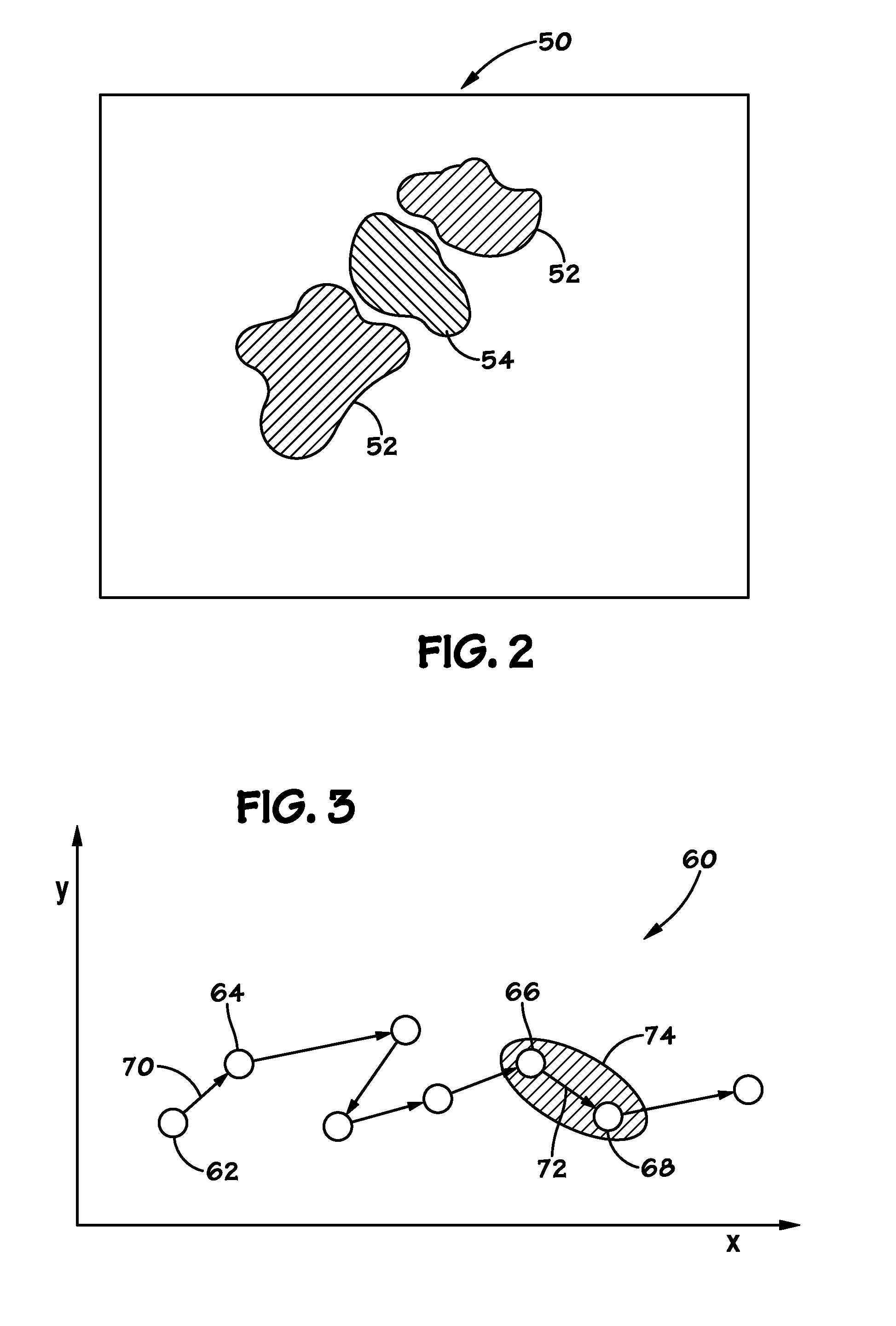Intelligent heterogeneous wireless handoff
a wireless device and heterogeneous technology, applied in the field of communication systems, can solve the problems of increasing the communication network, affecting the handoff process between a wireless device and a network node, and undetected packet loss, so as to prevent ping ponging and reduce the adverse effects of vertical hando
- Summary
- Abstract
- Description
- Claims
- Application Information
AI Technical Summary
Benefits of technology
Problems solved by technology
Method used
Image
Examples
Embodiment Construction
[0012]In a wireless communication network, a wireless device may communicate with other devices in the network by connecting to the network via links with one or more network nodes. Each network node may be linked to controllers or gateways, which may be linked to a common communications medium. For example, a communication (e.g., between two mobile phones) within a network may include a pathway of links between two communicating devices, which may include links between each device (e.g., a mobile phone) and a network node (e.g., a base station). A “link” may refer to a communication path, a connection, or a transferred signal, etc., between a wireless device, a network node, or a controller in the network, which connects every element in the network. A processor in the communication network may link the mobile phone to a particular network based on which network node is suitable for providing the best signal strength in linking with the mobile phone. During the duration of the comm...
PUM
 Login to View More
Login to View More Abstract
Description
Claims
Application Information
 Login to View More
Login to View More - R&D
- Intellectual Property
- Life Sciences
- Materials
- Tech Scout
- Unparalleled Data Quality
- Higher Quality Content
- 60% Fewer Hallucinations
Browse by: Latest US Patents, China's latest patents, Technical Efficacy Thesaurus, Application Domain, Technology Topic, Popular Technical Reports.
© 2025 PatSnap. All rights reserved.Legal|Privacy policy|Modern Slavery Act Transparency Statement|Sitemap|About US| Contact US: help@patsnap.com



